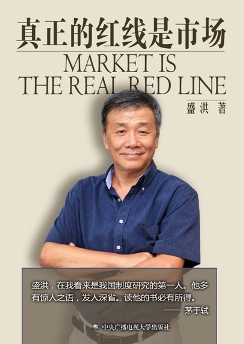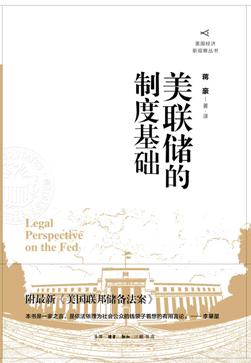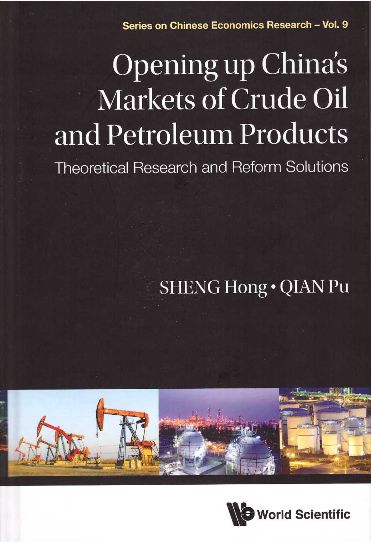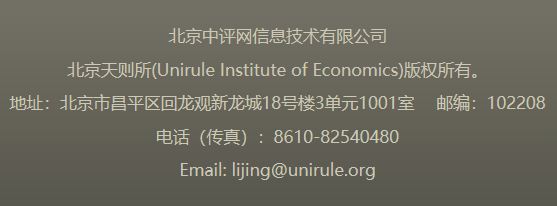
北京天则经济研究所历时一年完成了“国有企业的性质、表现与改革”的课题,其发布会暨研讨会于2011年3月2日在北京翠宫饭店成功举办。课题组总负责人盛洪教授及执行负责人赵农介绍了课题的研究成果并回答了记者的相关提问。本次会议邀请了众多专家,如中国政法大学原校长江平教授,新加坡国立大学东亚研究所杨沐,天则经济研究所学术委员会主席张曙光教授,清华大学政治经济学研究中心主任蔡继明教授,中国社会科学院数量与技术经济研究所研究员张昕竹,中国社科院经济研究所正研究员,博士生导师,微观经济学研究室副主任刘小玄,北京师范大学经济与工商管理学院副院长高明华,天则经济研究所学术委员会主席秋风,国家发改委宏观研究院王建,中国社会科学院法学研究所研究员王晓晔,中国政法大学商学院杨帆教授。
附:《国有企业的性质、表现与改革》摘要及前言
摘要
2001年至2008年国有及国有控股企业累计获得利润总额为49174.8亿元,2008年的账面利润总额比2001年增长了2.79倍;累计获得净利润为33098.6亿元,2008年的账面净利润比2001年增长了3.25倍。
State-owned and state-holding enterprises made a total profit of 4917.48 billion yuan from 2001 to 2008, with the total book profit of 2008 increased by 2.79 times over that of 2001. The total net profit amounted to 3309.86 billion yuan, with the total book net profit of 2008 increased by 3.25 times over that of 2001.
2008年,138家中央企业共实现利润6961.8亿元,占国有企业(由国资委管理)利润总额的52.3%。而在央企实现的净利润中,中石油、中移动、中国电信、中国联通和中国石化等10家企业占到70%以上;其中,中石油和中移动分别实现1268.02亿元和1127.93亿元,这两家企业就超过了全部央企利润的三分之一。可见,国有企业的利润主要是由垄断企业实现的。
The total profit of 138 central enterprises reached 696.18 billion yuan in 2008, accounting for 52.3% of the total profit of state-owned enterprises (under the management of State-owned Assets Supervision and Administration Commission). The net profits of ten enterprises occupied 70% of all net profits made by central enterprises, namely, China National Petroleum Corporation, China Mobile Limited, China Telecommunications Corporation, China United Network Communications Group Co., Ltd., China Petroleum & Chemical Corporation, i.e. Hereinto, China National Petroleum Corporation and China Mobile Limited made a profit of 126.802 billion yuan and 112.793 billion yuan respectively, the total of which exceeds one third of the total profit made by central enterprises. It can be seen that profits of central enterprises were mainly realized by monopoly enterprises.
2008年,国有企业人员薪酬比其他单位高13.3%,比社会平均水平高12%;工资分别高17.1%和13.7%。行业间存在巨大差异。 2008年,职工工资水平排名前五位的是证券业、烟草制品银行、其他金融活动、石油和天然气开采业,其中证券业收入水平是纺织业的10倍。
In 2008, staff salary of state-owned enterprises was 13.3% higher than that of other organizations, and 12% higher than social average level, while staff wage of state-owned enterprises was 17.1% higher than that of other organizations, and 13.7% higher than social average level. Tremendous differences exist among different industries. The top five industries in staff salary list were the securities industry, tobacco products industry, banking industry, other financial activities, and oil and gas industry, among which the income level of the securities industry was ten times that of the textile industry.
部分国企除享受固定供款的退休养老统筹计划外,还参加补充养老保险计划。作为养老保险的一种企业补充,2008年所覆盖职工仅占参加全国基本养老保险人数的6%左右,大多集中在电力、铁路、金融、保险、通信、煤炭、有色金属、交通、石油天然气等高收入行业或垄断行业。部分国企还为员工办理商业保险。
Apart from the integrated pension scheme of defined contribution, some state-owned enterprises also attend enterprise complement endowment insurance schemes. As a enterprise complement for endowment insurance, enterprise complement endowment insurance scheme covers merely 6% of all workers attending national primary endowment insurance, most of whom concentrated in high-income or monopoly industries, such as, the power industry, the railway industry, the finance industry, the insurance industry, the telecommunication industry, the coal industry, the non-ferrous metal industry, the transportation industry, and the oil and gas industry, i.e.
按照现行的公积金制度规定,职工和单位公积金缴存比例均不得低于职工上一年度月平均工资的5%,原则上不高于12%。不少垄断行业的国企和事业机关将这一比例提升到20%。网通运营公司全额计提41.42 亿元,一次性现金住房补贴。国有企业利用国家无偿划拨的用地进行单位的集资建房。企业购买市场上的商品房,以较低的价格出售给本企业员工。
According to regulations of existing housing provident fund system, the housing provident fund deposit ratio paid and deposited by staff themselves as well as that paid and deposited by units should be no less than 5% of the staff’s average monthly salary of the previous year, and no more than 12% in principle. A large number of state-owned enterprises and institutions of monopoly industries, however, raise this ratio to 20%. China Netcom Operations Limited once accrued 4.142 billion yuan at total amount as lump-sum cash housing allowance. State-owned enterprises also conduct residential building construction with raised funds on gratis land from free allocation by the state. In addition, some enterprises purchase commercial residential buildings and sell them to their own staff and workers at low price.
2009 年,上市央企的高管团队平均年薪31.3 万元,比民企高管高出61%,较地方国企的高管高出37.3%。
In 2009, the average annual salary of the management teams of listed central enterprises was 313 thousand yuan, 61% higher than that of private enterprises, and 37.3% higher than that of local state-owned enterprises.
2007~2009年,992家国企所得税的平均税负为10%,民企的平均税负达到24%。
From 2007 to 2009, the average tax burden of 992 state-owned enterprises was 10%, while that of private enterprises was as high as 24%.
自1994年至2007年,国有企业没有上交一分钱利润。2009年,国有企业利润上缴比例仅约6%,其余利润都在企业内部分配。而央企上缴的红利目前主要在央企体系内部转移,尚没有体现出惠及民众的意义。
State-owned enterprises did not turn over any profits from 1994 to 2007. In 2009, only 6% of state-owned enterprises’ profits were turned over, and the rest was all distributed within enterprises. Moreover, dividend turnover by central enterprises mainly transfers within the central enterprise system. Their significance in benefiting the common people has not been embodied yet.
2001年至2008年,国有及国有控股企业平均的净资产收益率为7.68%,而规模以上工业企业平均的净资产收益率为9.22%。因此,国有及国有控股企业的名义绩效也不够高。
From 2001 to 2008, the average return on equity of state-owned and state-holding enterprises was 7.68%, while that of industrial enterprises above designated size was 9.22%. Therefore, the nominal performance of state-owned and state-holding enterprises was not high enough.
国有企业表现出来的绩效并非其真实绩效,是国有企业在享受着种种政策优惠,和民营企业在不平等的经营环境下所体现出的绩效。这种不平等主要体现在政府财政补贴、融资成本和土地及资源租金等方面。
The performance of state-owned enterprises is not their real performance, but performance after enjoying various preferential policies and under unfair management environment. The unfairness is mainly embodied in fiscal subsidy by the government, financing cost, and land and resource rent, i.e.
从1994 年至2006年,国家财政用于国企亏损的补贴达到了3652.92 亿元。2007年后对一般经营性企业的亏损补贴已基本取消,但是事实上对于企业的补贴仍然存在。2007—2009年,在有整体巨额利润的情况下,中石油和中石化仍然获得共774亿的补贴。2008-2009年,两家航空企业、五家电力集团和两家电网公司获得国资委的注资约160亿元左右。
From 1994 to 2006, the state fiscal subsidy for the losses of state-owned enterprises accumulated to 365.292 billion yuan. Though subsidy for losses of ordinary profit-making enterprises had been basically abolished since 2007, subsidies to state-owned enterprises actually still exist. From 2007 to 2009, China National Petroleum Corporation and China Petroleum & Chemical Corporation received a total subsidy of 77.4 billion yuan despite their enormous profits. From 2008 to 2009, some 16 billion yuan was injected into two aeronautical enterprises, five electric power groups, and two grid corporations by the State-owned Assets Supervision and Administration Commission.
国有及控股企业平均实际利息率为0.016,个人及控股企业平均实际利息率为0.054。若按照私营企业的利率水平重新计算国有企业应支付利率,2001到2008年利息支付差额共计约28469亿元,占国有及国有控股企业名义净利润总额的84.55%。
The real interest rate for state-owned and state-holding enterprises is 0.016, while that for private-owned and private-holding enterprises is 0.054. If we recount the interests which should by paid by state-owned enterprises with the interest rate for private enterprises, the total interest difference will be 2846.9 billion yuan from 2001 to 2008, accounting for 84.55% of the total nominal net profits made by state-owned and state-holding enterprises.
按工业用地价格的3%的比例计算工业土地租金,2001-2008年国有企业共应缴纳地租34391亿元,占国有及国有控股企业名义净利润总额的102%。
If we compute the industrial land rent at 3% of the price of the industrial land, state-owned enterprises should pay a total rent of 3439.1 billion yuan from 2001 to 2008, accounting for 102% of the total nominal net profits made by state-owned and state-holding enterprises.
石油的资源租金(资源税)平均仅为每吨25元,随着石油价格的上升,占原油收入的比例上限从2001年约1.75%下降到2008年0.72%。加上按销售收入的1%计征的资源补偿费。我国对石油征收的资源税和资源补偿费不足价格的2%。其远低于国外10%—20%的比例。而特别收益金在40美元以下的收缴比例很低,不能完全实现资源所有者的权益。
With the rising oil price, resource tax and price ratio ceiling was lowered from 1.75% in 2001 to 0.72% in 2008. In addition, resource compensation fee is merely 1% of sales revenue. Therefore, resource tax and resource compensation fee on oil in China is less than 2% of its price, far below the ratio of 10% to 20% in other countries. Moreover, collection proportion for special oil gain levy below 40 dollars is too low to fully realize interests of resource owners.
从账面财务数据中还原企业的真实成本,并对政府补贴和因行政垄断所致的超额利润予以扣除,从而测算国有企业的真实绩效。据测算,2001年至2008年,国有及国有控股企业平均的真实净资产收益率则为-6.2%。
The real performance of state-owned enterprises can be estimated through restoring their real costs from book financial data and deducting governmental subsidies and abnormal profits gained from administrative monopoly. According to our estimation, the average real return on equity of state-owned and state-holding enterprises from 2001 to 2008 is -6.2%.
我国存在结构性的国进民退现象。从资金的角度来看,电力蒸汽热水生产供应业的国有比重从2005年的85.8%上升到2008年的88.2%。从工业总产值的角度来看,电力蒸汽热水生产供应业的国有比重从2005年的89.3%上升到2008年的91.7%。石油和天然气开采业的国有比重从2005年的90.5%上升到2006年的98.9%。
Structural “Guo Jin Min Tui” phenomenon currently exists in our country. In terms of capital, the proportion of state-owned enterprises in electric power, steam, and hot water production and supply industries rose from 85.8% in 2005 to 88.2% in 2008. In terms of gross industrial output value, the proportion of state-owned enterprises in electric power, steam, and hot water production and supply industries increased from 90.5% in 2005 to 98.9% in 2008.
通过对国家部委官员的履历统计发现,在19个部委的183名副部级以上官员当中,具有国有企业工作经历的就有56人,比重达到30.6%。通过对123家中央企业的高管履历统计发现,在有信息披露的47家企业当中,一共有115名高管具有政府工作背景,平均每家企业达到2.45人。因而,存在国企管理层与官员之间的身份互换。
A resume survey of officials of ministries and commissions under the State Council shows that among 183 officials above vice ministerial level of 19 ministries and commissions, 56 people have working experiences in state-owned enterprises, the proportion for which is as high as 30.6%. In addition, a resume survey of senior executives of 123 central enterprises shows that 115 senior administrators of 47 enterprises with information disclosure have government working background, that is, each enterprise has an average of 2.45 people with such background. Therefore, identity exchange exists between management staff of state-owned enterprises and government officials.
企业高管通过进入政府获取政策与资源;政府官员进入企业兑现在位时的经济收益。
Enterprise senior executives enter the government for policies and resources, while governmental officials enter enterprises to materialize their economic profits earned while in the position.
行政部门拥有制订法律的实施条例、指导意见和部门规定等权利,即实际上存在“行政立法”;企业管理层无需游说立法机关,只需游说行政部门即可,即存在“院内活动”。
Administrative departments have rights to formulate regulations on the implementation of laws, instruction opinions, and departmental regulations, i.e. In other words, administrative legislation exists. Enterprise management needs to lobby the administrative departments instead of the legislature. In other words, there are “activities within the house.”
国有企业应当存在较为明确的边界,其适合于市场机制不能得到充分发挥的公共品和准公共品的生产。尤其当政府成为唯一买家或者生产过程需要严格控制的产品,应当由国有企业提供,其他产品则由民营经济提供。国有企业存在的条件,是在提供公共物品时,融资阶段和生产阶段不可分离。
State-owned enterprises should have a rather clear boundary that they are suitable for production of public goods and quasi public goods in which market mechanism could not be brought into full play. Products which are purchased solely by governments or which should be stringently controlled during production progress should be supplied by state-owned enterprises, while other products should be supplied by private economy. The condition for existence of state-owned enterprises is when they supply public goods and the financing stage and can not be separated from the production stage.
国有企业是不同于一般政府和一般企业的公共机构。国有企业不应以营利为目标,应以实现社会公益为目标。
The state-owned enterprise is a public organization different from ordinary governments or enterprises, whose aim is to realize public good of society rather than to make profits.
我国已有的国有企业改革的实质是国有资产的资本化,即通过对国有资产的经营而获取利润。因此,当国有资产不断显现资本的属性,政府也就逐渐成为人格化或机构化的资本。
The nature of China’s current state-owned enterprise reform is capitalization of state-owned assets, that is, making profits through management of state-owned assets. Therefore, the government gradually turns into personalized or institutionalized capital when state-owned assets constantly show the attributes of capital.
国有资产资本化,尤其在我国经济转型的初期,不仅具有逻辑的必然性,而且具有推动市场化的积极意义。然而,随着我国市场经济的建立,以国有资产资本化为特征的国有企业改革,其历史使命将告终结。
As the main content of China’s market-oriented reform, the reform orientation choice of state-owned assets capitalization had both logical inevitability and historical progressiveness especially at the primary stage of China’s economic transition. However, with the establishment of market economy in our country, the historical mission of state-owned enterprise reform characterized by state-owned assets capitalization is about to come to an end.
国有企业的近期改革方案,应当围绕打破国有企业的行政垄断,取消国有企业无偿或低价占有和耗费国有资源的特权,规范国有企业的行为等重要方面而设计。其意义在于,促进不同经济主体充分、公平地展开经济竞争,从而更好地实现我国的社会正义,提高经济效率。
We should design the short-term reform plan for state-owned enterprises based on two major objectives, namely, breaking the administrative monopoly by state-owned enterprises, and regulating state-owned enterprises’ behaviors. The significance lies in that this will promote different economic main bodies to carry out adequate and fair economic competition, thus better realizing social justice and improving economic efficiency.
国有企业的终极改革目标有两个:其一,将国有企业转变为非营利性公法企业;其二,建立国有资产的宪政治理架构。
State-owned enterprise reform has two ultimate goals. The first goal is to change state-owned enterprises into non-profit public law enterprises, and the second one is to build up the constitutional governance framework for state-owned assets.
为实现国有企业的终极改革目标,国企必须从营利性领域(而不单是从竞争性领域)中逐步退出。
To realize the ultimate goal of reform, state-owned enterprises have to gradually retreat from the profit-making fields (rather than merely the competitive fields).
前言
近年来,关于“国进民退”的相关事例引起公众的广泛关注。典型的事例有两个:其一,山西省主要以煤炭安全生产为由对小煤窑进行整顿,致使大量民间资本从本地的煤炭行业被迫退出;其二,在山东省政府部门的推动下,国有但亏损的山东钢铁集团兼并民营但盈利的日照钢铁有限公司。若从这两则具体事例来看,将其定性为当地政府部门主导下的“国进民退”并不为过。联想到早些年间民间资本从石油石化行业中的炼油与销售环节中被迫退出等事例,公众有理由对“国进民退”是否形成某种趋势表示关切。
应当说,以上事例的发生是有其相应的政策背景的。在“抓大放小”与“国有资本战略性重组”的背后,已经形成了“进一步推进国有资本向关系国家安全和国民经济命脉的重要行业和关键领域(以下简称重要行业和关键领域)集中”的政策导向,以期达成“增强国有经济控制力,发挥主导作用”的目标。“重要行业和关键领域主要包括:涉及国家安全的行业,重大基础设施和重要矿产资源,提供重要公共产品和服务的行业,以及支柱产业和高新技术产业中的重要骨干企业”。
这种政策的含义与取向,对应于国际金融危机发生后西方主要发达国家的政策选择(例如政府对商业银行进行注资等),其合理性似乎得到进一步的印证。不仅如此,人们还从金融危机过程中中、外不同国家之间经济增长速度或危机程度的差异,导出中国国有经济的主导或控制地位在经济制度上的比较优势。
然而,公众还是对国有企业的行政垄断行为、分配不公等表示相当程度的不满。针对公众的责难,有关部门则拿出账面数据宣传国有企业的绩效、对就业的贡献以及所尽的社会责任。面对这种情势,经济学界并未做出积极的解答。因为数据清楚地显示:近年来国有企业的利润增长较快,绩效甚好。这显然与十年前的研究结果大相径庭。进一步讲,这不正是国有企业改革成效的体现吗?
有问题才需要改革,这是所有人都能接受的逻辑。在一些“数据”和“事实”的支撑下,不少学者也就逐渐相信:中国的国有企业改革已经取得了巨大成功,改革的历史使命已基本完成。于是,深化国企改革的话题日趋冷淡,以至无人问津。
面对混沌不清的现实判断,天则经济研究所理应承担其应有的社会责任。课题组力图回答以下三个重要问题:(1)国有企业的当下表现究竟如何?(2)从规范的意义上讲,国有企业应当成为什么性质的机构?(3)应当怎样推进国有企业改革?经过一年的认真研究,最终形成《国有企业的性质、表现与改革》的研究报告。
本报告的实证研究表明:(1)近年来,我国存在着结构性的国进民退现象;(2)国有企业不同程度地存在分配不公的现象,其薪酬与非货币收入普遍高于社会平均水平,这种现象在国有垄断企业显得尤为突出;(3)其账面利润中含有大量应当列入成本的地租、资源租、融资优惠带来的成本减少,以及因行政垄断所致的超额利润,经过成本还原和垄断利润扣除之后,其真实绩效远远低于社会平均水平,甚至是亏损;(4)国有企业的存在与运营,对我国宏观经济运行的稳定性与经济增长的质量构成一定损害,并扰乱了房地产市场和资本市场的健康发展。通过对国有企业的当下表现的政治经济学分析,部分身份互换与相互流转的官员和国企管理者正在结成利益集团,其运用“院内活动”和“部门立法”等方式,借助公权力而谋取私利。
经济学的规范分析表明:国有企业应当存在较为明确的边界,其适合于市场机制不能得到充分发挥的公共品和准公共品的生产,尤其当政府成为唯一买家或者生产过程需要严格控制的产品,应当由国有企业提供,其他产品则由民营经济提供。法学研究则表明:国有企业应当成为有别于政府机关的公共机构,其应以公共利益而非营利为目标,属于公法而非私法范畴。
在以上研究的基础上,本报告提出了重新定位下国有企业深化改革的方略。认为已有的国有企业改革,围绕着国有资产的资本化而进行,即如何有效地将原有的生产性国有资产转变为经营性的国有资本。于是,需要将国有企业变成以营利为目标、自主经营的法人,而政府则成为出资人。这种改革虽然促进了中国的市场化,但也正在形成由利益集团掌控大量社会资源为特征的权贵资本主义。深化改革应当以将国有企业转变为非营利性公法企业以及建立国有资产的宪政治理架构为目标。在此基础上,提出了深化国有企业改革的具体措施。
本研究报告由主报告和若干分报告构成。主报告第一、二章分别对国有企业改革理论与实践、以及国有企业的分类进行梳理,为后面的分析提供基础;第三、四、五、六章分别从分配、效率、国进民退现象及其对宏观经济的影响等方面,实证研究国有企业的当下表现;第七章就其当下表现做出政治经济学分析;第八、九章分别从经济学和法学角度探讨了国有企业的规范性质;第十章提出了重新定位下国有企业深化改革的方略。若干分报告作为主报告分析的补充与拓展。
在课题的研究及本报告的形成过程中,课题组还召开了两次专家研讨会。张曙光、周放生、杨帆、韩朝华、刘小玄、华生、管维立、王建、秋风、王晓晔等提出了建设性的意见,在此表示衷心的感谢!













